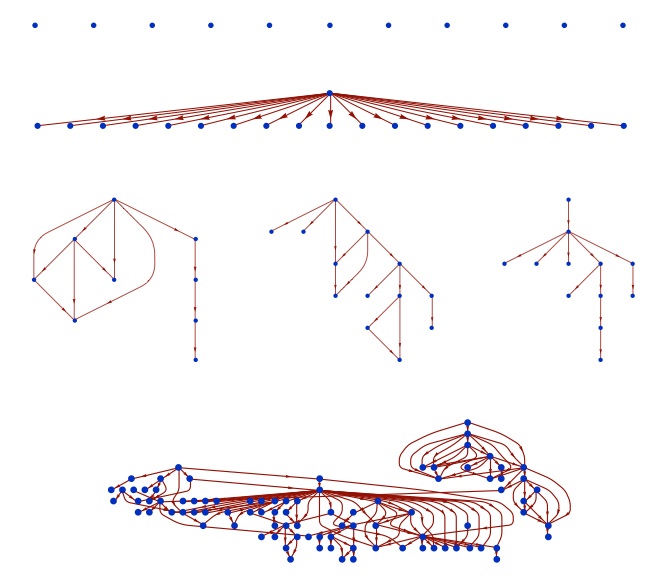Why Google Ripples will be a lot less cool than it sounds.
Google + now has a new feature, Ripples, that allows you to see a network visualization of the diffusion of a post (see the Gizmodo article here). The pictures are cool, but the original post has to be public, and then it has to be shared by one Google+ user to other Google+ users. But, the chance of interesting ripples happening very often are pretty slim; here's why.
Bakshy, Hofman, Mason, and Watts looked at exactly this kind of cascade on Twitter, which is a great platform for this kind of research for several reasons. First, everything is effectively public, so there are none of the privacy issues of Facebook, and we don't have to limit ourselves to looking at just the messages that people choose to make public like we do on Google +. Second, "retweeting" messages is an established part of Twitter culture, so we expect to find cascades. Finally, since tweets are limited to 140 characters, links are often shortened using services like bit.ly. This means that if I create a link to a New York Times article and you create a link to the same page independently, those links will be different, so the researchers can tell the difference between a cascade that my post creates and one that yours creates.
Some of the cascades that Bakshy et al. found are shown in this figure.
 They looked at 74 million chains like these initiated by more than 1.6 million Twitter users during two months in 2009. A lot of interesting things came out of the study, but the most important one for Google Ripples is that 98 percent of the URLs were never reposted. That's not good for Ripples. The latest number puts the entire Google plus user population at only 43.6 million users, and since only a small fraction of these users' posts will be public posts, even if people share other people's posts on Google+ as frequently as the retweet links on Twitter (which is unlikely), we still can't expect to see many Ripples that look like anything but a lonely circle.
They looked at 74 million chains like these initiated by more than 1.6 million Twitter users during two months in 2009. A lot of interesting things came out of the study, but the most important one for Google Ripples is that 98 percent of the URLs were never reposted. That's not good for Ripples. The latest number puts the entire Google plus user population at only 43.6 million users, and since only a small fraction of these users' posts will be public posts, even if people share other people's posts on Google+ as frequently as the retweet links on Twitter (which is unlikely), we still can't expect to see many Ripples that look like anything but a lonely circle.
